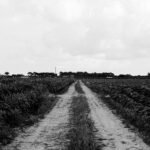Urban Jungle: Discovering Edible Treasures in the City ===
Who says you can only find food in grocery stores and restaurants? The concrete jungle of the city is also teeming with edible treasures waiting to be discovered. City foraging is a growing trend that allows urban dwellers to explore their surroundings and connect with nature while also enjoying delicious and nutritious food. But before you grab your basket and head out to the streets, here are some tips on how to safely and ethically forage for wild edibles in urban areas.
From Sidewalks to Salad Bowls: A Guide to Safe and Ethical Foraging
Foraging in the city may seem daunting, but it can be safe and rewarding if done responsibly. It’s essential to familiarize yourself with the plants and their edible parts before picking them. Avoid picking plants that grow near busy roads or industrial areas, as they may be contaminated with pollutants. Also, refrain from taking too much from one area to ensure that the plants can continue to grow and sustain the ecosystem.
It’s also crucial to respect private property and obtain permission before foraging in someone’s yard or garden. Avoid picking plants from parks, as they may be protected or part of a restoration project. Always leave plenty for the wildlife and other foragers, and do not harvest any plant that you are unsure of. It’s better to be safe than sorry when it comes to wild edibles.
Feast on the City: Tips and Tricks for Finding Delicious Wild Foods
When it comes to city foraging, it’s all about knowing where to look. Trees, bushes, and flowers are excellent sources of wild edibles. Fruit trees, such as apple and pear trees, can be found in public spaces and are often overlooked. Berries, such as blackberries and raspberries, grow abundantly along fences and walls. Edible flowers, such as violets and dandelions, can be found in parks and other green spaces.
Don’t forget about urban farming and community gardens, which are becoming increasingly popular in cities. Many of these gardens grow a variety of fruits, vegetables, and herbs that are free for the taking. Additionally, some cities have local foraging groups that organize walks and events to help you discover new edible treasures in your area. With these tips and tricks, you’ll be feasting on the city in no time.
City foraging is not only a fun and rewarding activity, but it also promotes a healthier and more sustainable lifestyle. By foraging in the city, you can reduce your carbon footprint, support local ecosystems, and enjoy fresh and nutritious food. However, always remember to forage safely and ethically, respect private property and public parks, and educate yourself on the plants and their edible parts. With these guidelines, you can explore the urban jungle and discover delicious treasures in unexpected places.




